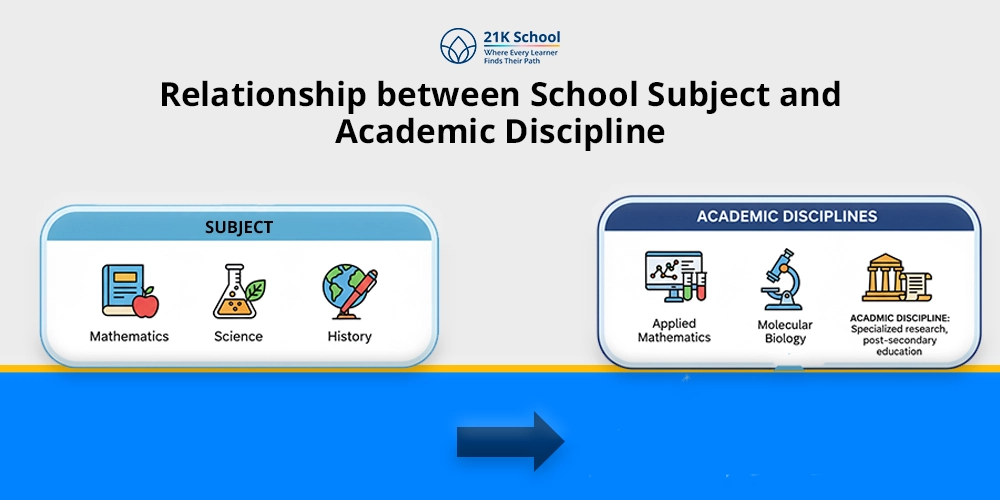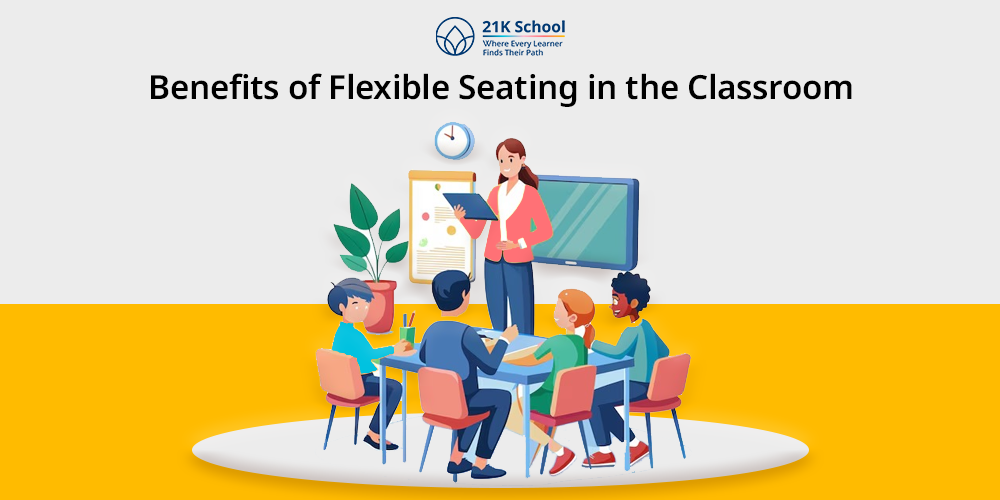
Consider the last time you had to stay put in one place a long time, how did it feel? Restless, pained, even distracted?
And consider that that is the everyday situation of the students in an old-fashioned classroom with fixed seats.
The needs of students and their learning environment should also change in the modern rapidly changing world. Cue in flexible seating – a new kind of classroom arrangement, which promotes mobility, choice and comfort.
This method moves the traditional rows of desks and chairs to various types of seating. Here the student has the choice of where and how to work.
Moreover, flexible seating is more than being able to move around, it significantly influences students’ learning, engagement and well-being.
This article is going to explore the reasons why flexible classroom seating is great. And how it can transform the classroom experience of both students and educators.
Contents
- What is Flexible Seating?
- Top 15 Benefits of Flexible Seating in the Classroom
- 1. Collaboration
- 2. Adaptability
- 3. More Creativity and Innovation
- 4. Healthy Classroom Community
- 5. Choice and its Power
- 6. Improves Concentration
- 7. Increases Core Strength
- 8. Healthier Physical Health
- 9. Sensory Input
- 10. Dedication to Learning
- 11. Improved Interaction and Concentration
- 12. Community Sense Building
- 13. Improved Attention in Children with ADHD
- 14. Better Examination Results
- 15. Fulfilling to Various Sensory Demands
- Summing Words
What is Flexible Seating?
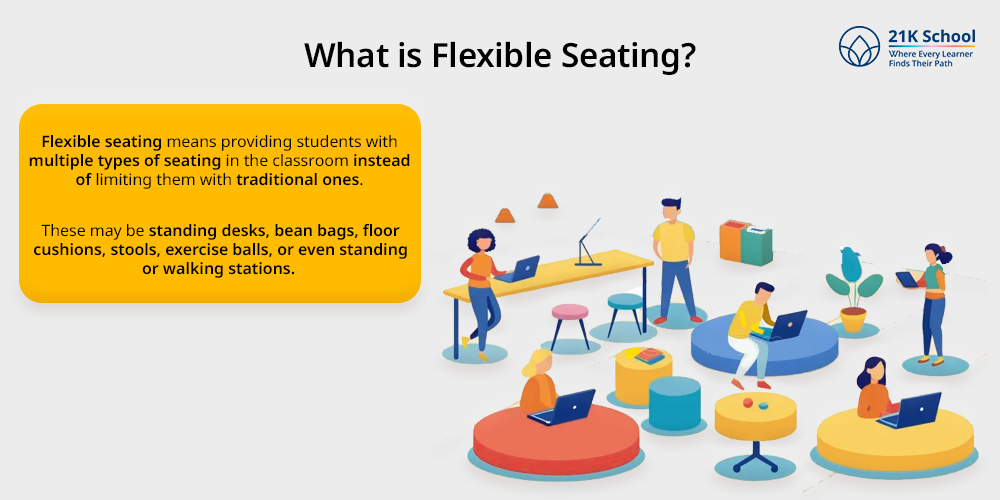
Flexible seating means providing students with multiple types of seating in the classroom instead of limiting them with traditional ones.
These may be standing desks, bean bags, floor cushions, stools, exercise balls, or even standing or walking stations.
The point is that students are free to make their own choice of the most effective seating arrangement. They are evoked to choose best references for their state of learning, mood, and energy.
The arrangement allows students to control their learning conditions and also meet various sensory requirements. It further fosters physical activity, and collaborative and concentrated work.
Flexible seating is not a one-size-fits all education model. It provides multiple options that will encourage a variety of learning patterns and assist an environment where students feel successful.
Top 15 Benefits of Flexible Seating in the Classroom
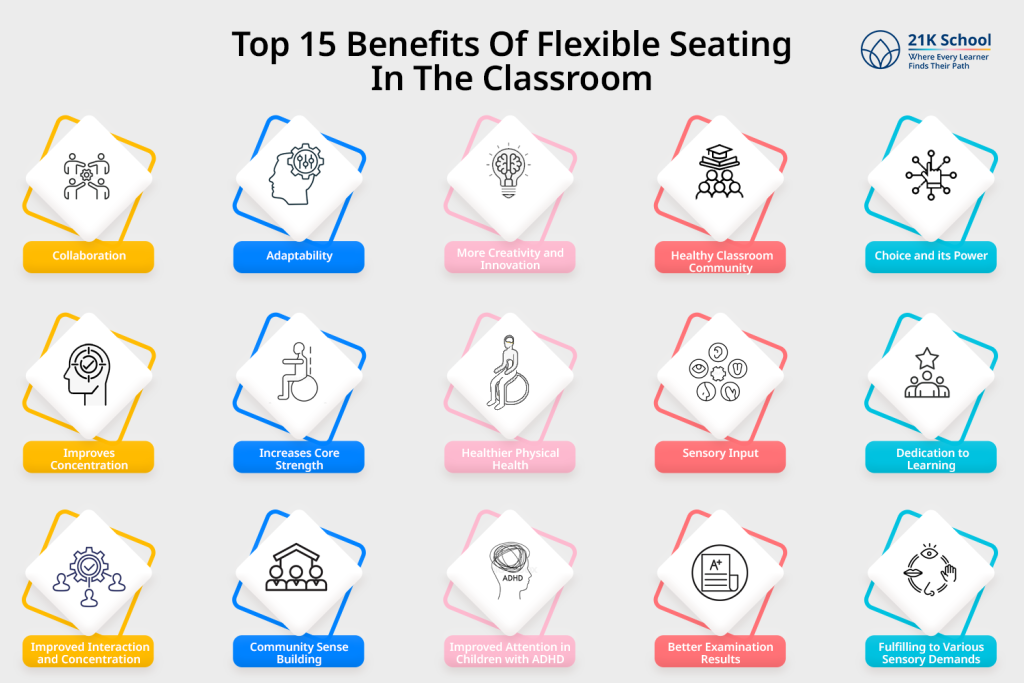
Flexible seating in the classroom allows students to choose where and how they learn, promoting comfort, collaboration, and engagement.
It fosters a dynamic learning environment that accommodates different learning styles , boosts focus, and encourages social interaction.
By providing choice and mobility, flexible seating helps create an inclusive, student-centered space that supports academic and personal growth.
1. Collaboration

Flexible sitting encourages the collaborative culture in the classroom. Students move freely and are more likely to mingle with various students hence promoting teamwork and communication.
Learning in groups is simplified and more natural when students have access to a comfortable location.
This structure also enables free discussions and project work, which is important in the development of critical thinking and problem-solving .
2. Adaptability
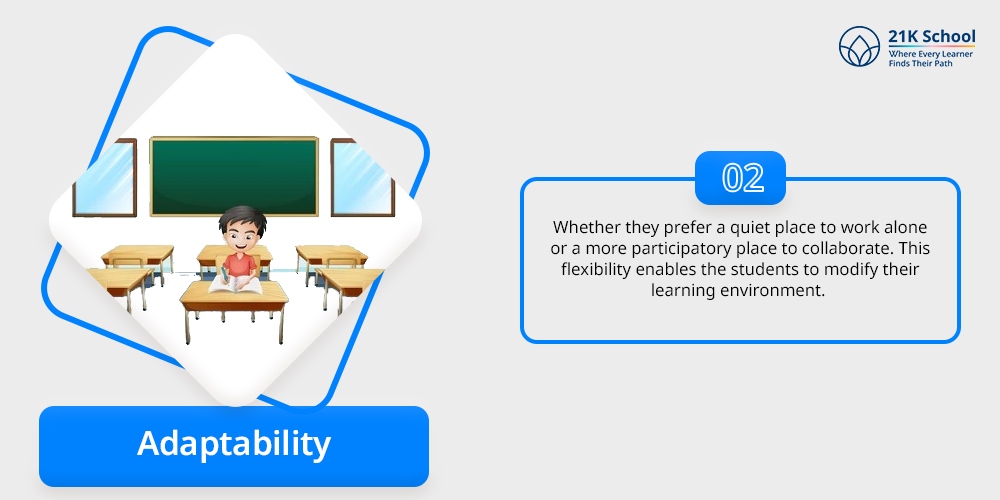
Every student is different and not all students are going to learn in a standard desk environment. Adaptability is provided with a range of comfortable seating styles, students can select what aids their concentration.
Whether they prefer a quiet place to work alone or a more participatory place to collaborate. This flexibility enables the students to modify their learning environment.
This could be done depending upon what helps them learn and create a more personalised learning .
3. More Creativity and Innovation
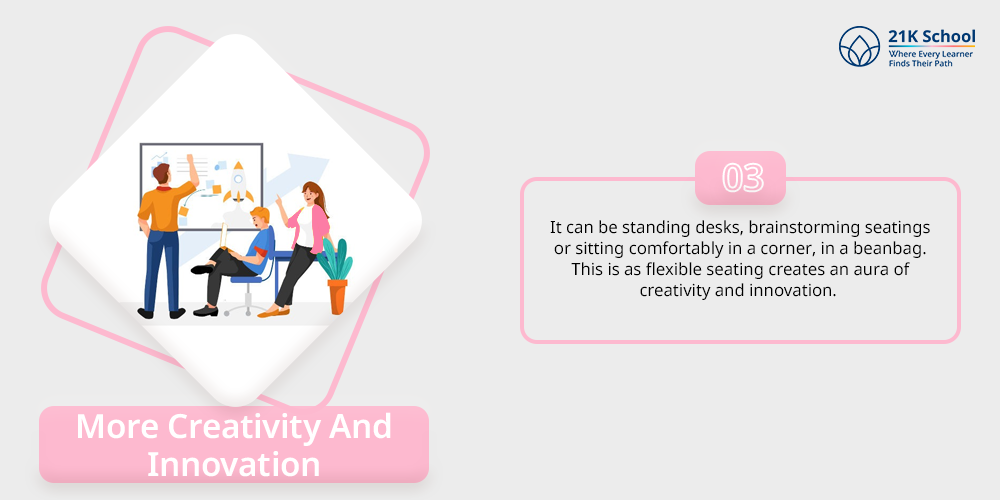
Students who feel good in the surroundings will tend to think creatively. Sitting systems eliminate the strict format of the classroom environment and give students freedom to be innovative in seeking solutions.
It can be standing desks, brainstorming seatings or sitting comfortably in a corner, in a beanbag. This is as flexible seating creates an aura of creativity and innovation.
Empowered students and populations tend to be more adventurous and experimental in their physical space. They can perform many creative activities for kids in these environments.
4. Healthy Classroom Community
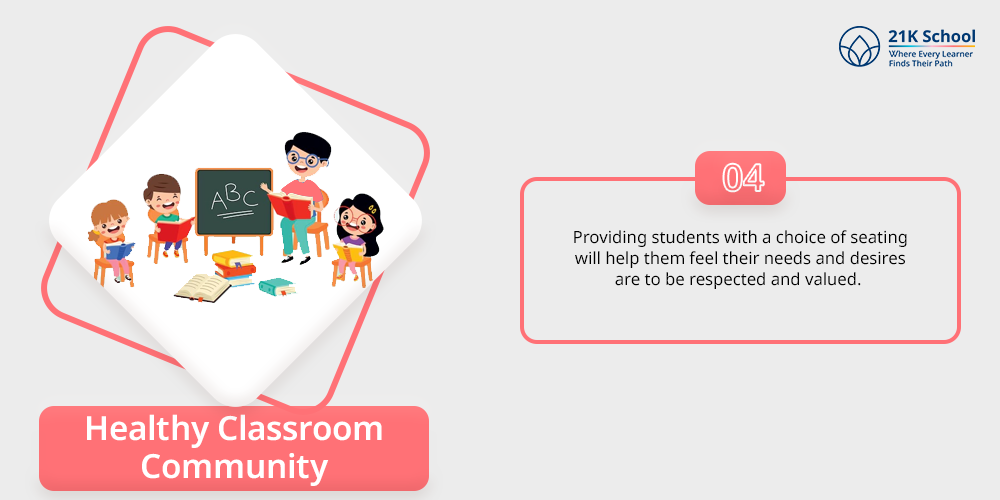
The culture of an inclusive classroom may be evoked by the use of flexible seating. Providing students with a choice of seating will help them feel their needs and desires are to be respected and valued.
Such a practice enables a sense of community and belonging. Students will be inclined to behave in activities and interact freely in case they feel suitable in their surroundings.
This kind of flexible arrangement in the classroom, alignment may not be that stiff. This might also help create a cozy atmosphere that is conducive to learning.
5. Choice and its Power
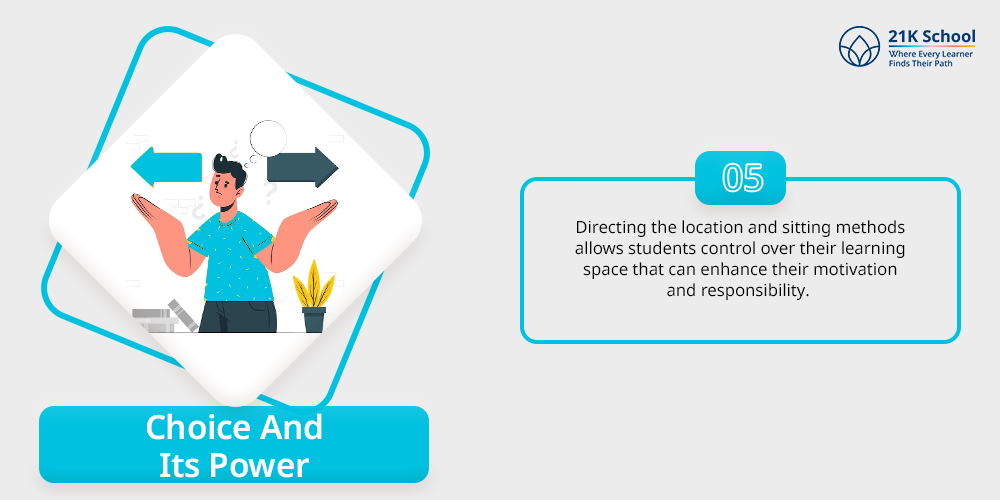
Directing the location and sitting methods allows students control over their learning space that can enhance their motivation and responsibility. This student agency is also found useful especially among older learners.
They have to learn how to make choices and own the learning process. Students should feel that they control the way their day goes. This will make them more willing to participate and initiate work.
Incorporating comfortable sitting in schools can make one understand how education empowers the life of every student .
6. Improves Concentration
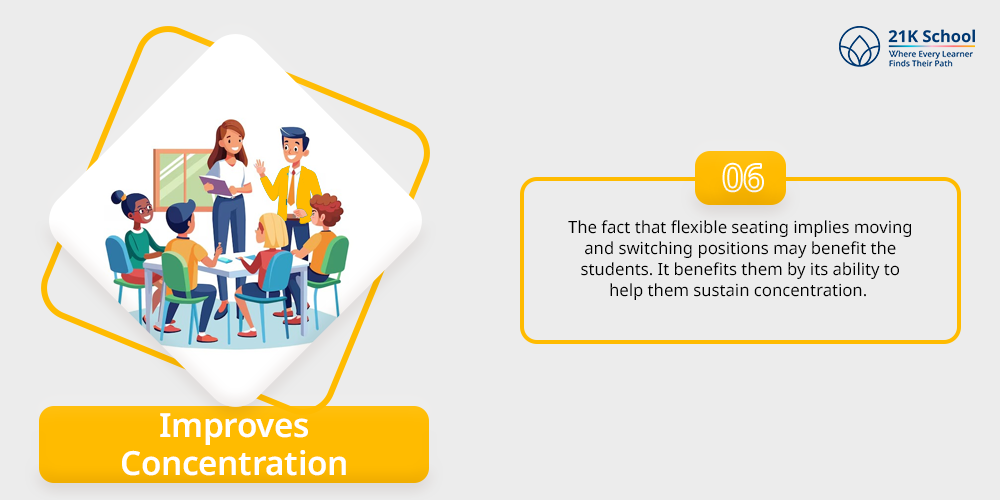
There is nothing surprising that concentration can be enhanced with the help of a comfortable learning environment. Conventional desks when students are meant to sit down interminably are distracting and can be cumbersome.
The fact that flexible seating implies moving and switching positions may benefit the students.
It benefits them by its ability to help them sustain concentration. It could be a standing desk, a padded seat, a yoga ball chair.
However the student can change the environment to fit their needs which would improve their concentration time. Now, students won’t need to worry about how to concentrate on studies .
7. Increases Core Strength
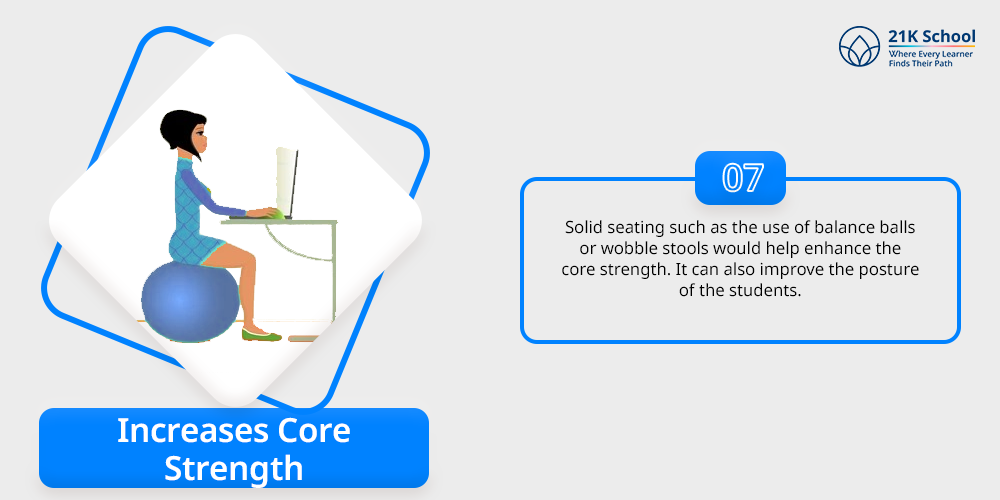
Solid seating such as the use of balance balls or wobble stools would help enhance the core strength. It can also improve the posture of the students.
Such seats involve the use of muscles so as to maintain balance. It’s a factor that builds core muscles in the long run. Having a stronger core may lead to physical health improvements.
It can help students feel better and more concentrated in the classroom.
8. Healthier Physical Health
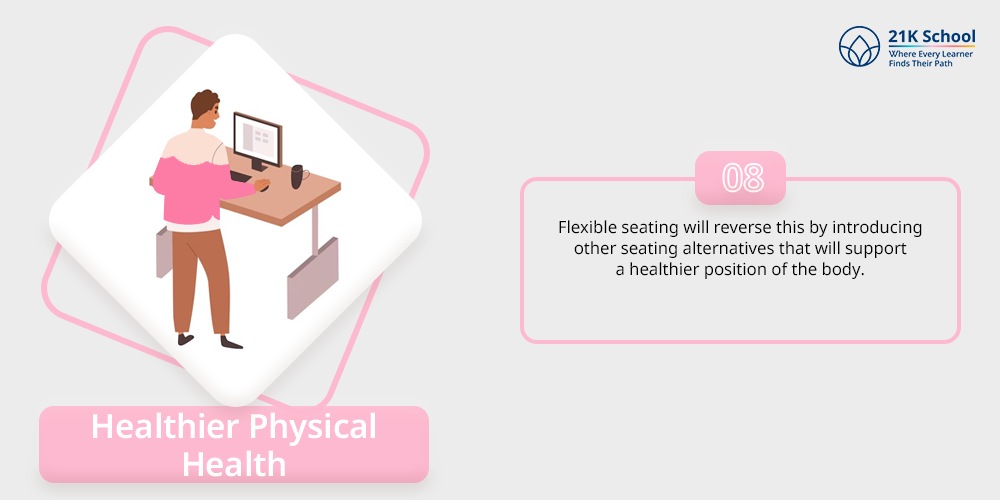
The old-fashioned desk sometimes makes students lower their shoulders and use bad posture. It may result in discomfort and even having health problems in future.
Flexible seating will reverse this by introducing other seating alternatives that will support a healthier position of the body. Examples include the use of standing desks to reduce the health dangers of sitting, stability balls and active chairs.
This is to keep students engaged with body muscles and circulation and improved posture. And no matter what sitting you bring in, there are some problems with physical education in schools .
They also contribute to depriving students of physical fitness.
9. Sensory Input
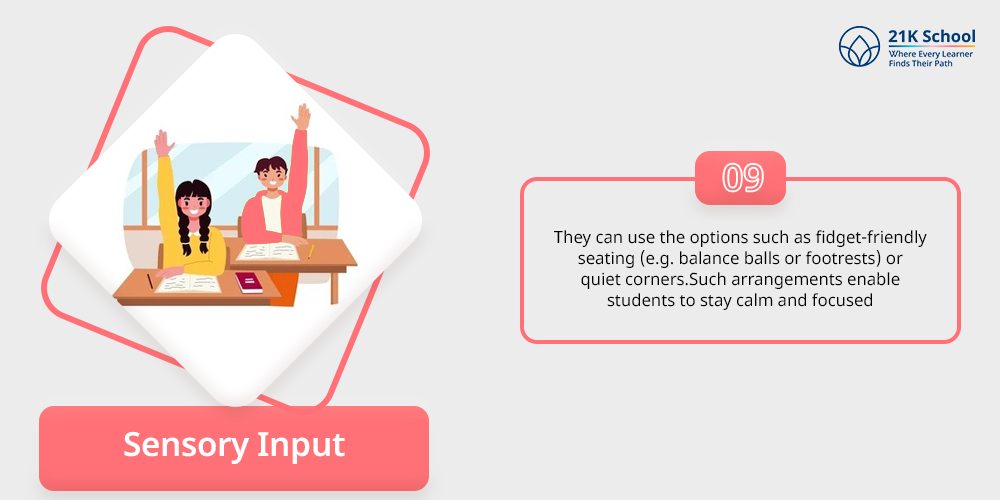
Flexible seating serves as a necessary sensory input to some students particularly those with sensory processing needs. And we are well aware that students should be able to manage their sensory needs.
They can use the options such as fidget-friendly seating (e.g. balance balls or footrests) or quiet corners. Such arrangements enable students to stay calm and focused; thus, not getting overstimulated but still remaining in the learning process.
Flexible seating can accommodate various sensory needs of students with ADHD or autism. It can give them a chance to excel at their education .
10. Dedication to Learning
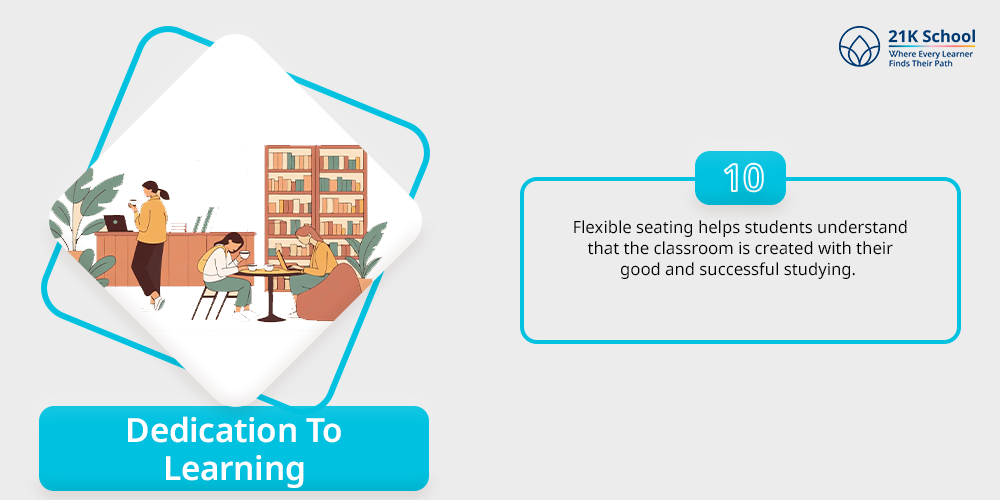
Flexible seating helps students understand that the classroom is created with their good and successful studying. By feeling relaxed and respected, students will have a chance to be more interested in their learning.
The willingness to adapt their seating space is part of a bigger ambition. It is to develop an inclusive, interactive and open classroom in which students can really prosper.
This all together assists in creating a positive learning environment .
11. Improved Interaction and Concentration
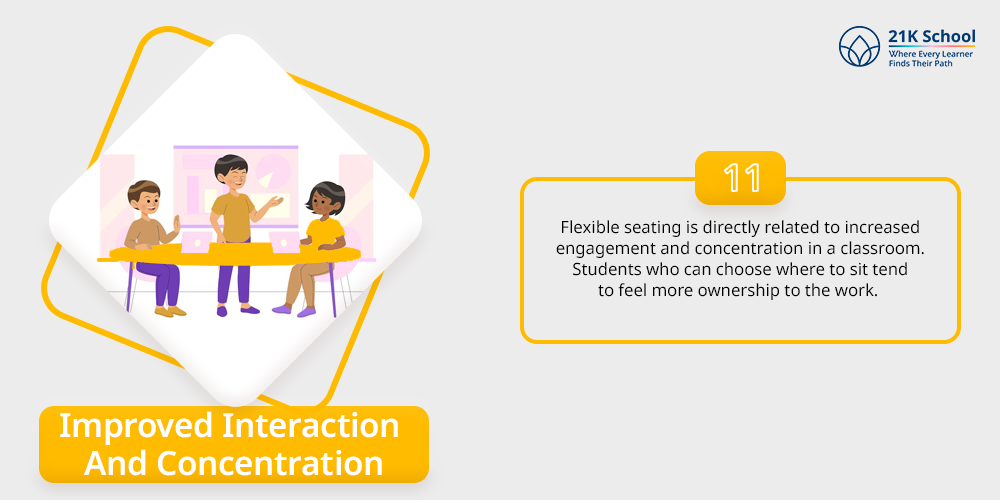
Flexible seating is directly related to increased engagement and concentration in a classroom. Students who can choose where to sit tend to feel more ownership to the work.
It is especially when they are able to control their area better. Flexible seating allows students to be comfortable and in charge of their learning.
This is whether they like to sit on a cushion, more comfortable standing at a standing desk, or rocking in a chair. This custom application to seating eliminates distractions and helps students to be able to focus on tasks longer.
This results in more meaningful learning experiences.
12. Community Sense Building
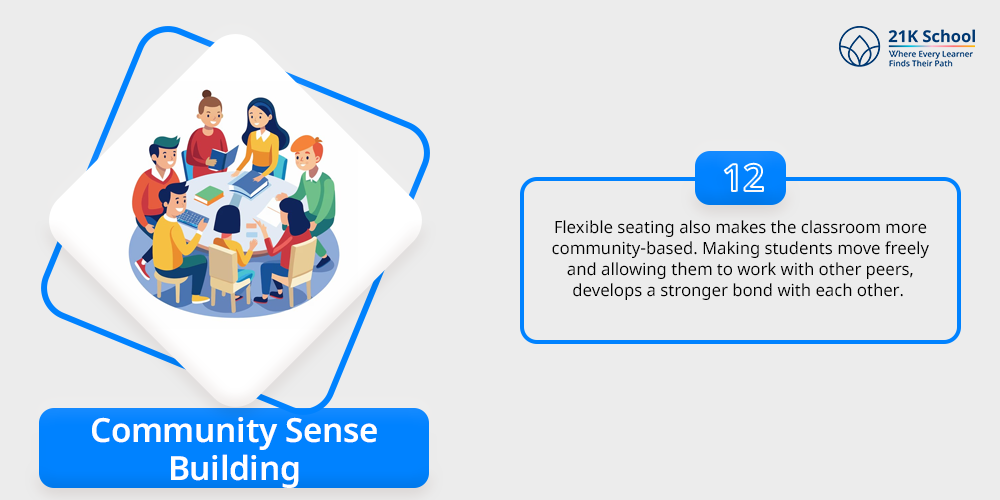
Flexible seating also makes the classroom more community-based. Making students move freely and allowing them to work with other peers, develops a stronger bond with each other.
Collaboration with peers and group work start to feel natural, and students get to enjoy various opinions. Communication with diverse classmates leads to the development of empathy , teamwork, and communication skills .
Such developments are crucial in school and the future workplace.
13. Improved Attention in Children with ADHD
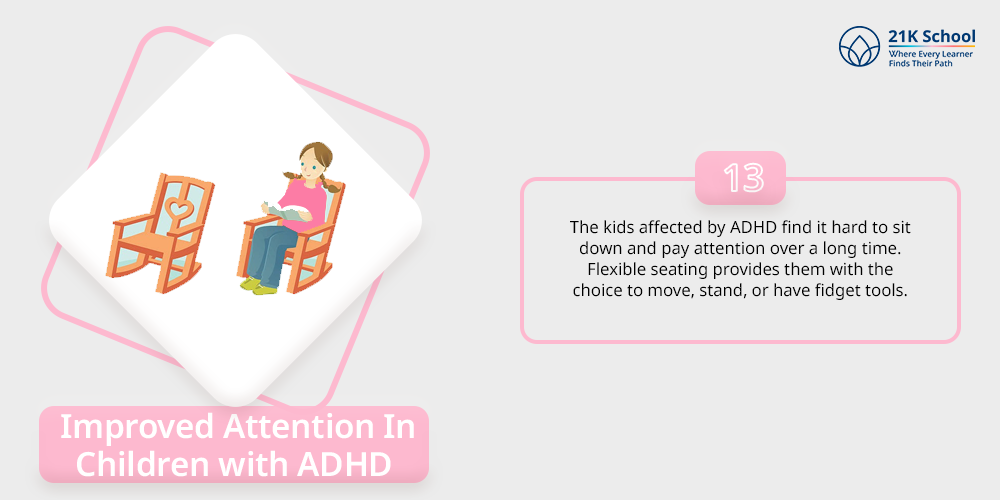
The kids affected by ADHD find it hard to sit down and pay attention over a long time. Flexible seating provides them with the choice to move, stand, or have fidget tools.
It aids them to release their energy in constructive manners. Balls, balance boards, or rocking chairs give students with ADHD the motion they require to stay focused without any disturbance.
The strategy assists them to work with the content and stay focused.
Your next read can be why individual attention is important in online class .
14. Better Examination Results
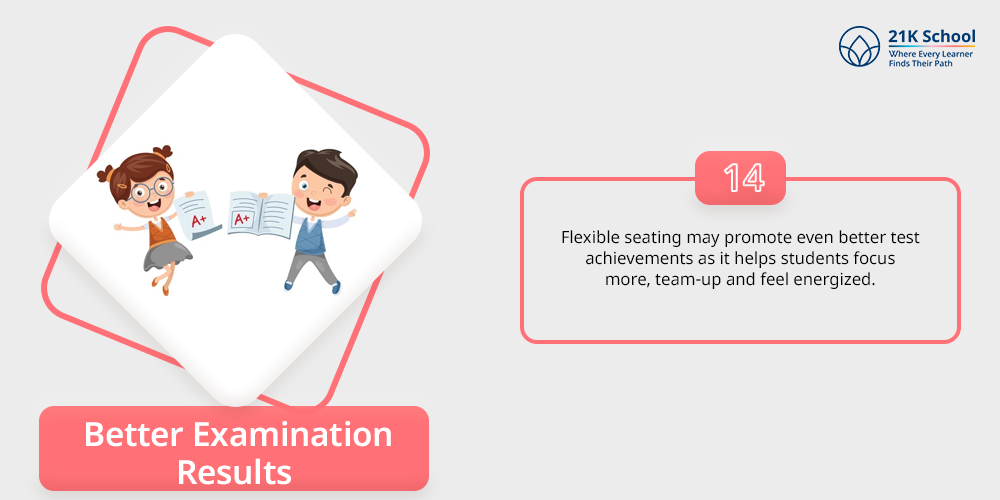
Research indicates that the comfortable equipped with engaged students help in performing their studies effectively. Flexible seating may promote even better test achievements as it helps students focus more, team-up and feel energized.
When students learn in comfortable conditions, it results in improved concentration, increased memorization, and a brighter attitude towards studying. It will ultimately help improve grades and reduce exam-stress .
15. Fulfilling to Various Sensory Demands
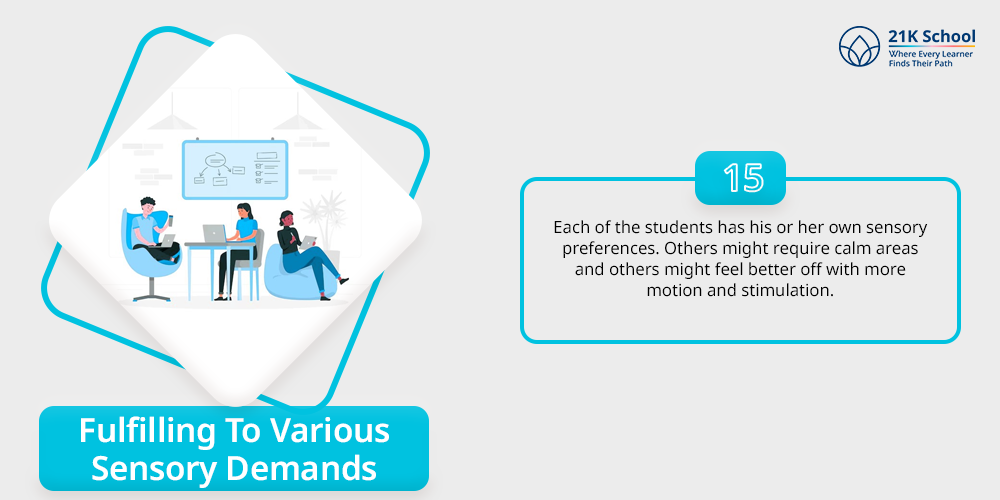
Each of the students has his or her own sensory preferences. Others might require calm areas and others might feel better off with more motion and stimulation.
Flexible sitting allows these different needs ensuring that students may sit where this is most helpful to them. Flexible seating makes sure all the sensory needs are fulfilled.
It may be using noise-canceling headphones in a quiet corner or getting allowed to stand up and work on projects.
Summing Words
Flexible seating is not merely a trend. It’s an approach to shaping a learning environment that is open, inclusive and meets specific needs of every single student.
With a variety of seats, schools are able to promote the physical, emotional and academic well-being of students. This results in better focus, togetherness, and creative thinking skills .
Flexible seating leads to ownership, a good community in the classroom, and self-directed learning among the kids. The advantages are obvious: a more active, student-friendly classroom that allows everybody to excel.

